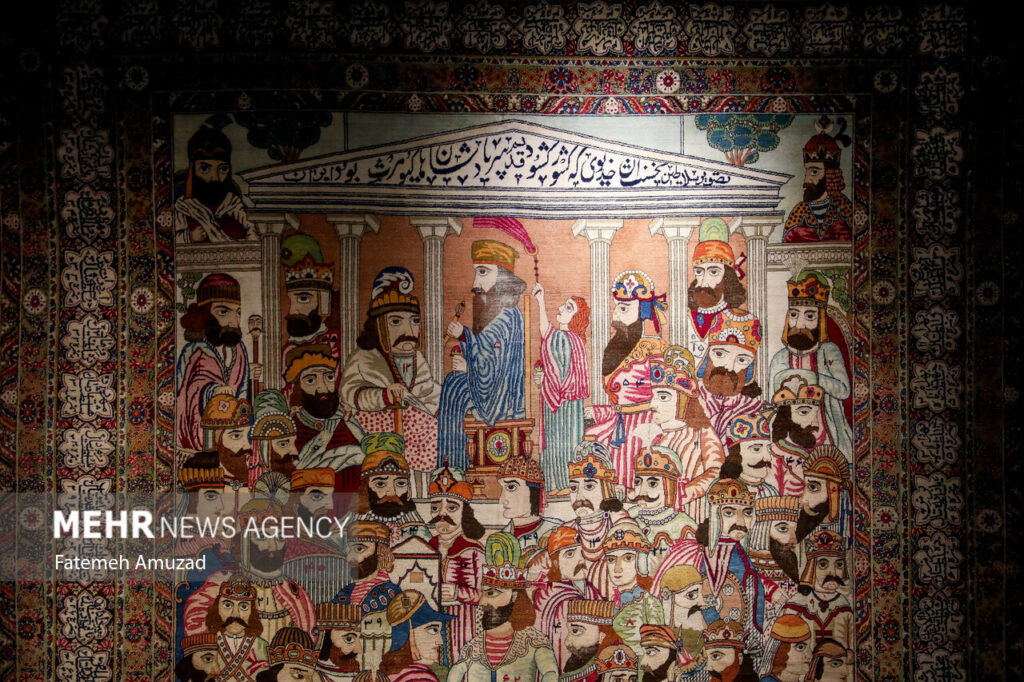For centuries, Persian carpets weave stories of artistry, heritage and identity into every thread. These masterpieces embody Iran’s deep cultural tapestry, not just floor coverings. From ancient craftsmanship techniques to complex designs that reflect mythology, nature and spirituality passed down over generations.

Each Persian carpet is a vibrant, living symbol of Iran’s timeless elegance, resilience, and creative soul, connecting the past and present with a colorful tale of human expression.

Persian Carpet: A wonderful combination of art, history and spirituality
Persian carpets are more than just exquisite textiles. A harmonious blend of artistic mastery, rich historical heritage and deep spiritual symbolism. Each intricate pattern and vibrant colour reflects cultural storytelling for centuries, combining the artisan spirit with Iran’s timeless tradition. Weaving in precision and passion, Persian carpets act as a living bridge between past and present, art and faith, beauty and meaning.

The world’s oldest carpet made under the influence of Persians
Historians believe that the world’s oldest carpets are made under Persian influence and the swings are thought to be made in areas culturally related to Persia, such as Persia (northeast Iran) or Central Asia, where Persian artistic traditions were dominated.

The history of Iranian carpet weaving
The tradition of carpet weaving in Iran dates back two to five hundred years, with roots traced to the Achemenid Empire and beyond. These carpets were originally created for practice – providing warmth and comfort at home, but have evolved into masterpieces that reflect local stories, beliefs and artistic styles. Each Persian carpet has a unique blend of motifs, colors and weaving techniques that are often unique to the region in which it is created, such as Tabriz, Isfahan, Kashan, Kerman, QOM, and more.
Among various historical periods, the Safavid period (16th to 18th centuries) marks the golden age of Persian carpet weaving. During this period, particularly in cities such as Isfahan, Tabriz and Kashan, art forms reached a peak of quality, complexity and aesthetic aesthetic, under the auspices of powerful royal families. Iconic masterpieces such as the famous Aldaville Carpet were created during this period. Many of them are currently housed in world-class museums.
Late periods like the Kajar dynasty (19th century) saw an expansion of Persian carpet production for international trade, making carpets the major export product to Europe and beyond.

Iran’s Carpet Museum: Preservation of Cultural Heritage
Located in Tehran, Iranian Carpet Museum is a renowned institution dedicated to preserving and presenting the rich heritage of Iranian handmade rugs.

Founded in 1978, the museum building was designed by Iranian architect Abdul Aziz Mirza Farman. Its facade is inspired by the traditional carpet loom structure and symbolizes the deep connection between the museum and the art forms it houses.

The museum features an exhibition hall that covers over 3,000 square meters, displaying over 150 carpets and rugs from across Iran, including works from Karman, Tabriz, Kashan, Isfahan and other historic weaving centres.

These works spanned centuries, and provide visitors with a comprehensive understanding of the evolution of carpet designs, patterns and techniques.

Additionally, the museum has a specialized library with around 7,000 books in Persian and foreign languages, serving as a valuable resource for researchers, artists, and anyone interested in the technical and historical aspects of Persian carpets.

Persian carpets contribute to Iran’s cultural diplomacy
Persian carpets are more than just decorative objects. It is a living testimony of Iran’s artistic genius, cultural depth and historical continuity. Its role in the world transcends commerce and aesthetics, which represent the rich interaction of tradition, identity and global cultural interactions. As both a work of art and a cultural ambassador, Persian carpet remains a lasting treasure that has been praised and cherished around the world.
World-renowned for its intricate design and exquisite craftsmanship, Persian carpet has become Iran’s powerful cultural ambassador. Beyond their aesthetic aesthetics, these carpets embody history, artistry and cultural identity for centuries, making them ideal tools for cultural diplomacy.
Displayed at museums, at international trade fairs, Persian carpets, globally traded, nurture a cross-cultural understanding and appreciation. Through these timeless masterpieces, Iran shares its rich heritage with the world and builds a bridge of respect and dialogue between nations.
Reported by Marzieh Rahamani

